Presented by student group Ashoka, Washington University in St. Louis’ annual Diwali performance celebrates South Asian dance and song. It also showcases the region’s colorful fashions. From silk cholis to intricately stitched kurtas, the show’s colorful and ornate outfits honor the religious and cultural significance of Diwali, the festival of lights, while highlighting the diversity of South Asia.
This year’s show, “Time Capsule: Diwali,” features performances from a cappella group Sur Taal Laya and dance teams Bhangra, Garba, Raas, Chahaat and Classical as well as a skit. Showtimes are 7 p.m. Friday, Nov. 4, and 1 and 7 p.m. Saturday, Nov. 5, in Edison Theatre. Tickets are $10.
Here, Diwali performers share the stories behind their clothing.
Garba
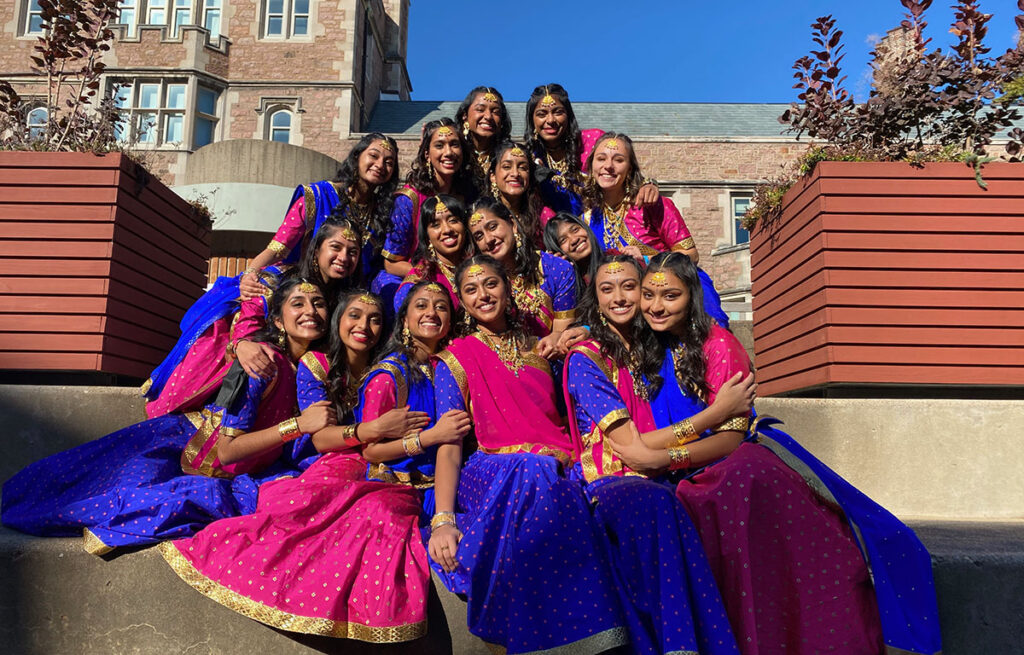
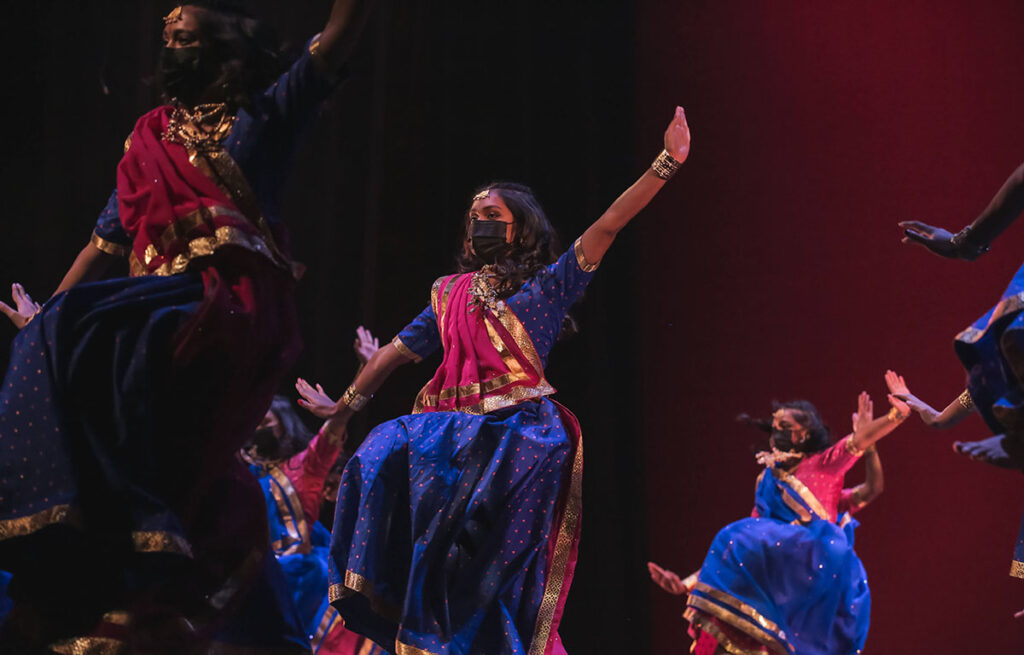
Garba is a style of dance that comes from Gujarat, a state in northwestern India, and is traditionally performed during Navratri, an annual festival honoring the goddess Durga. The Garba team (above) wore blue and pink outfits for the 2021 Diwali performance. (Courtesy photos)
As is custom, the colors of this year’s Garba attire will remain a secret until showtime. But choreographer Khushi Patel promises the ensembles, rented from a Bollywood store in Chicago, are “very bright and will stand out in the crowd.”
Garba performers wear a chaniya choli which consists of three pieces — a chaniya (skirt), a choli (blouse) and an odhani or dupatta (scarf, which is draped over the outfit). Chaniya cholis worn for Navratri often feature elaborate mirror work. “It is a religious belief that mirrors help ward off the evil eye by reflecting it away or blinding it,“ Patel explained.
Bhangra
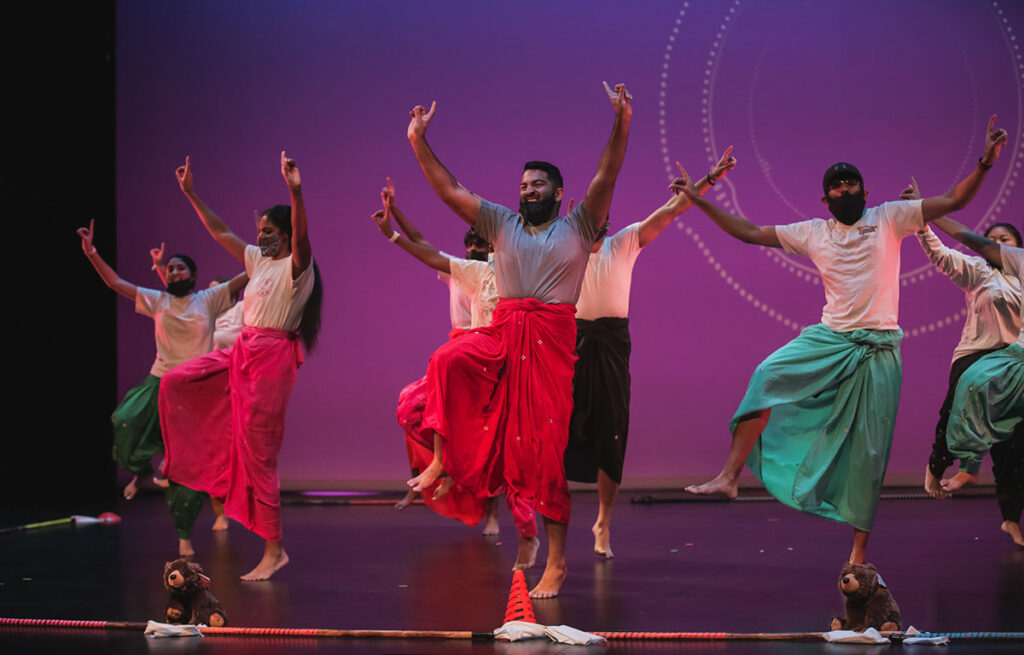
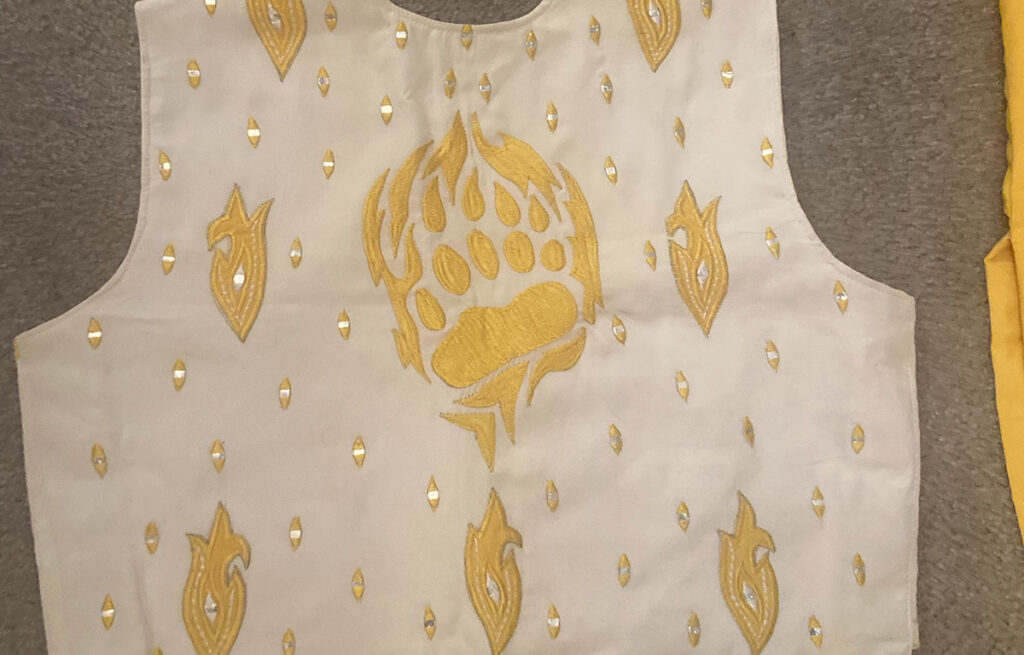
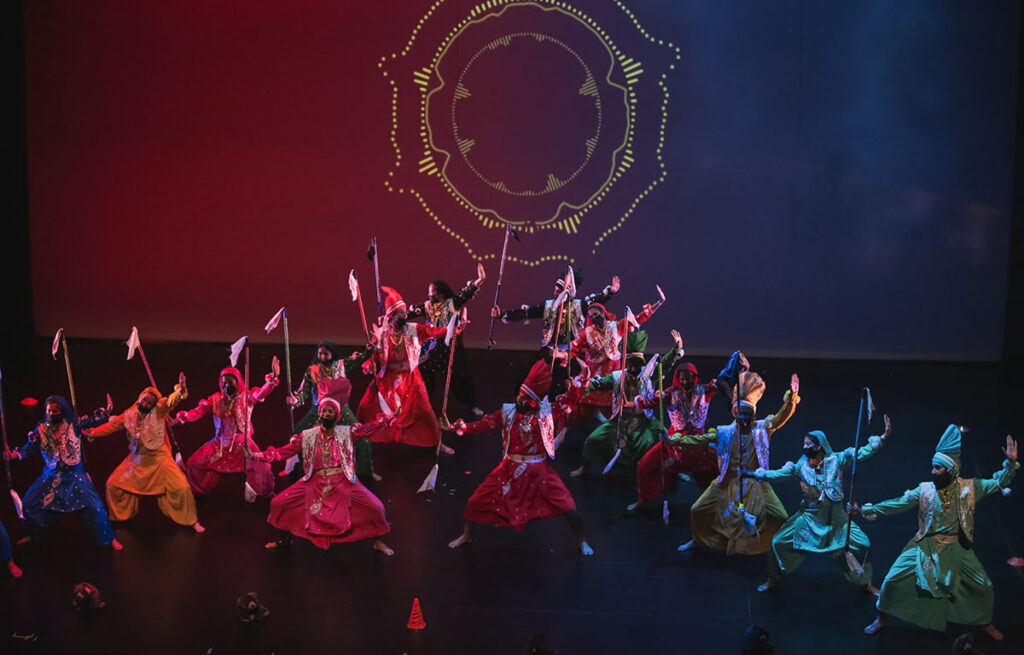
The Bhangra dance style comes from the northern Indian state of Punjab, historically a farming region. The dance traditionally is performed as a celebration after the harvest. The team’s vest (top right) features a bear paw to represent WashU. (Courtesy photos)
The Bhangra outfit, called a vardiyaan, differs for male and female performers. While both wear the kurta (a tunic-like top), phumman (arm accessories that are tied around the wrists and biceps), and jewelry, male and female dancers have different head coverings. Men wear the pagh (turban), a representation of the Sikh ties to the dance, while women wear a chunni cloth.
Choreographer Harsh Wadhwa said the team passes down clothing from generation to generation. This year’s outfits are about three years old and came from a vendor in India that makes outfits for competitive teams. Wadhwa especially likes the custom detail on the vests — a bear paw to represent WashU.
Bharatanatyam
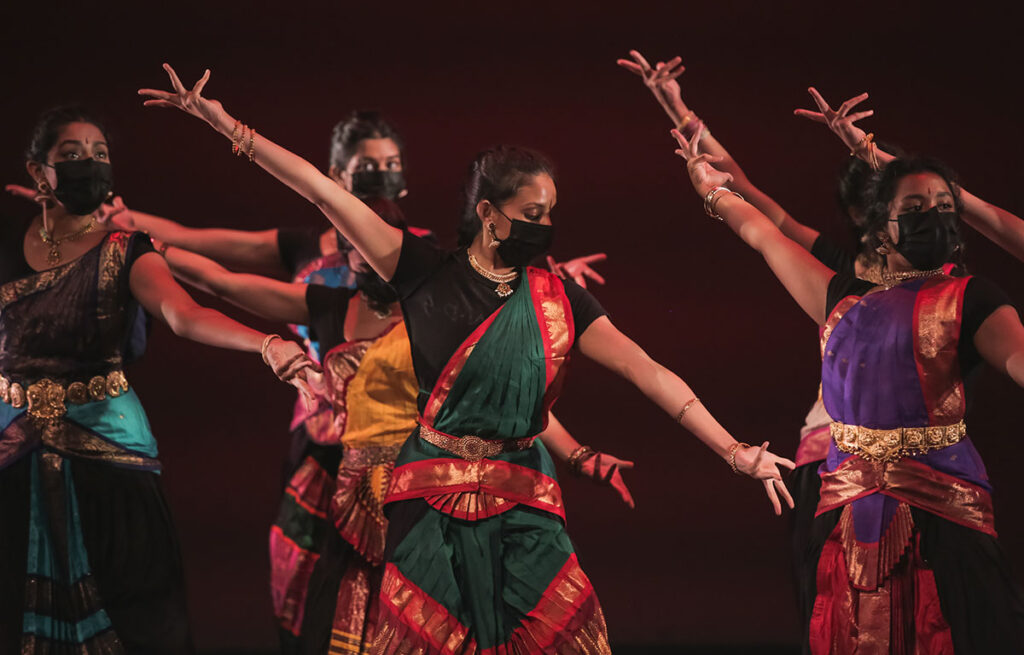

The Classical dance team will perform three styles of dance — Bharatanatyam, Kuchipudi and Kathak. Bharatanatyam (pictured above) is from Tamil Nadu in southern India and is a temple dance traditionally performed for gods. (Courtesy photos)
Bharatanatyam dancers wear a skirt with a front pleated panel that opens like a fan when they move. Dancers also are adorned in jewelry, including sun and moon headpieces to represent the duality of life.
Bharatantayam dancers acquire their own outfits. Nandini Jain, captain of the Classical team, bought hers during a trip to Mumbai on India’s west coast, but noted that most dancers get their clothing from southern India, where the dance style originated.
“I remember being in India and going into the room where the tailor was making the costumes and just seeing all the silks on the walls,” Jain recalled. “The array of colors and styles was a beautiful reminder of the uniqueness of my culture, and it was humbling to know that soon I would be able to wear a stunning dress made out of this precious material.”
Fashion show
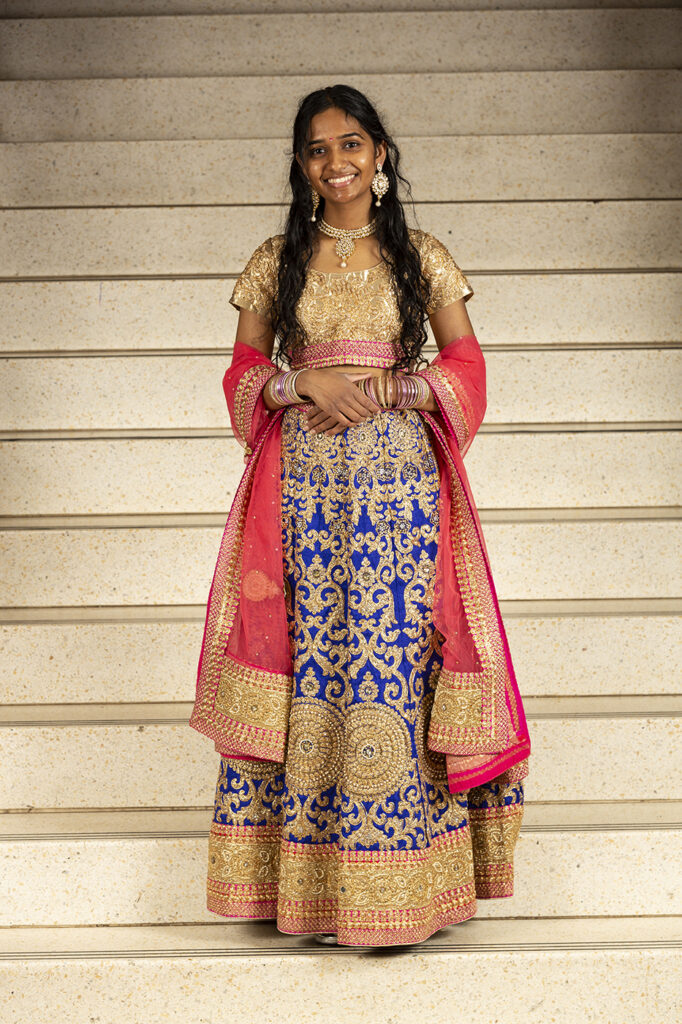
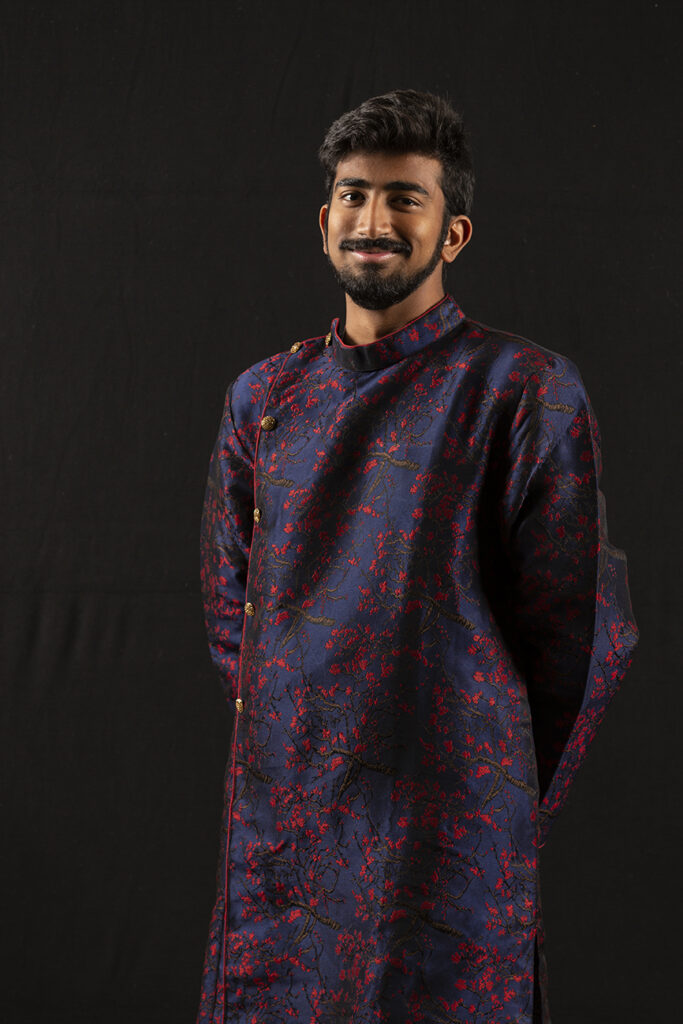
Ishana Tata, the fashion show coordinator, and Anirudh Jaishankar model their outfits for the Diwali fashion show. (Photos: Jerry Naunheim Jr./Washington University)
In addition to dance performances, Diwali features a fashion show showcasing modern and traditional designs from India, Pakistan, Bangladesh and other South Asian nations.
Ishana Tata, fashion show coordinator, plans to wear a lehenga that she bought while visiting her uncle in New Delhi. Though her family is from Andhra Pradesh in southeastern India, the lehenga is a style of northern attire. This particular lehenga, which Tata wore for her Sweet Sixteen, offers intricate bead work.
For Tata, the fashion show — and clothing in general — provides a way to connect with her roots.
“I feel like, growing up, almost all of us go through a phase in life where you’re denying your culture and don’t want it to be part of your identity because it’s not what everyone else at school does,” Tata said. “But wearing Indian clothes feels very special to me. When you go to an event with your friends and your family and you’re all wearing these clothes, it just ties you back to your culture.”
Anirudh Jaishankar plans to wear a few different kurtas for the fashion show. Though he traces his familial roots to Tamil Nadu in southern India, his parents grew up in northern India, providing a blend of cultural experiences. His kurta is more typical of northern India and he appreciates the outfit’s patterns and ornate details.
Jaishankar purchased his kurta online, noting the pandemic has made it more difficult to travel to India for new Diwali outfits. Because Diwali coincides with the Hindu New Year, wearing new clothes signifies a new beginning, Jaishankar explained.
The fashion show, for Jaishankar, is not only a way to show off his culture, but also to connect with his family. Jaishankar’s grandmother used to live with his family, and she put great emphasis on recognizing Diwali as a celebration of new beginnings to bring prosperity for the upcoming year.
“I’m excited to represent South Asian attire and its significance to Diwali,” Jaishankar said. “This year, in my grandmother’s absence, I’m honored to share the Diwali festival with my WashU community just as my grandmother once did with me.”
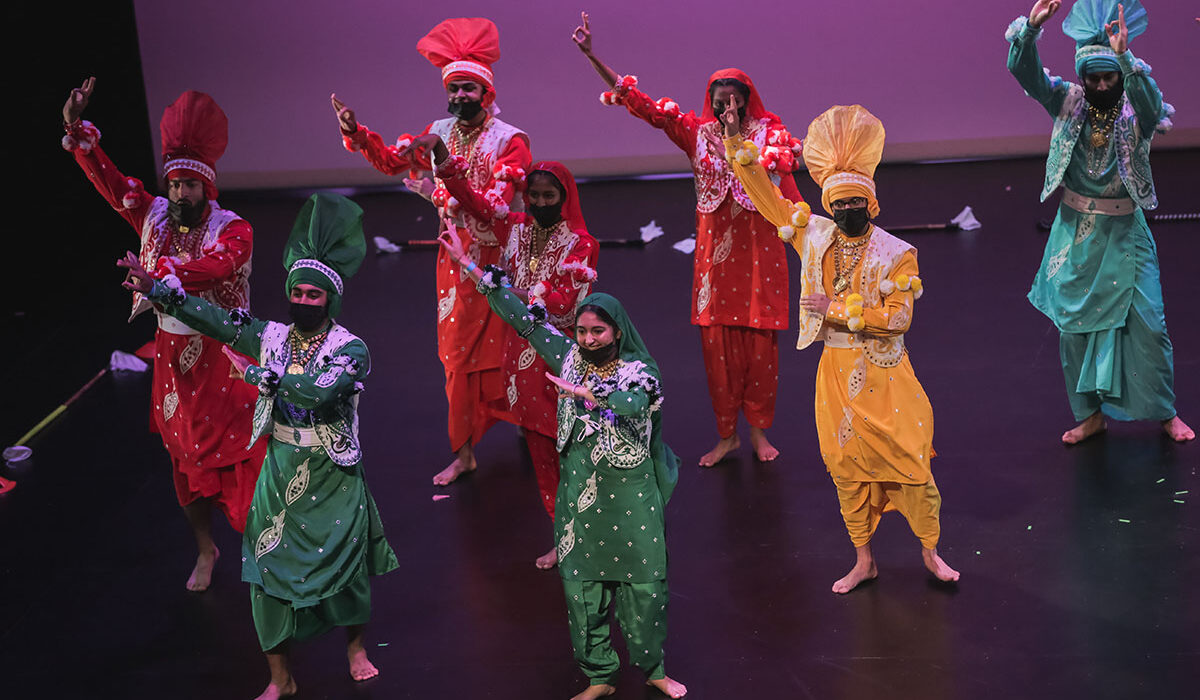
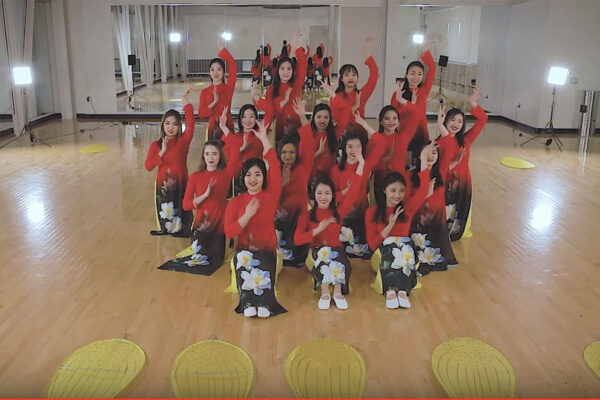
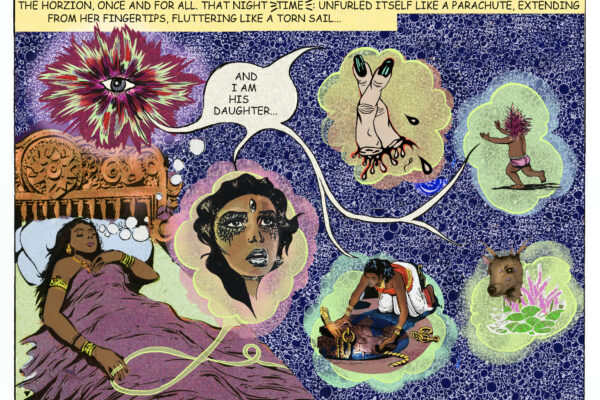
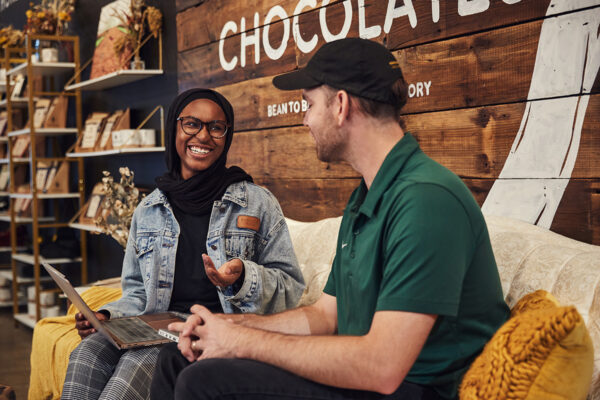
Comments and respectful dialogue are encouraged, but content will be moderated. Please, no personal attacks, obscenity or profanity, selling of commercial products, or endorsements of political candidates or positions. We reserve the right to remove any inappropriate comments. We also cannot address individual medical concerns or provide medical advice in this forum.